What Is Digital Advertising And Why It's Important?
Digital advertising is the marketing process of using online ads to promote products or services through digital channels like search engines, social media platforms and websites to a predefined audience.
The goal of digital ads is to raise brand awareness and increase sales.
Here is an example of a digital ad on top of Google's search results.
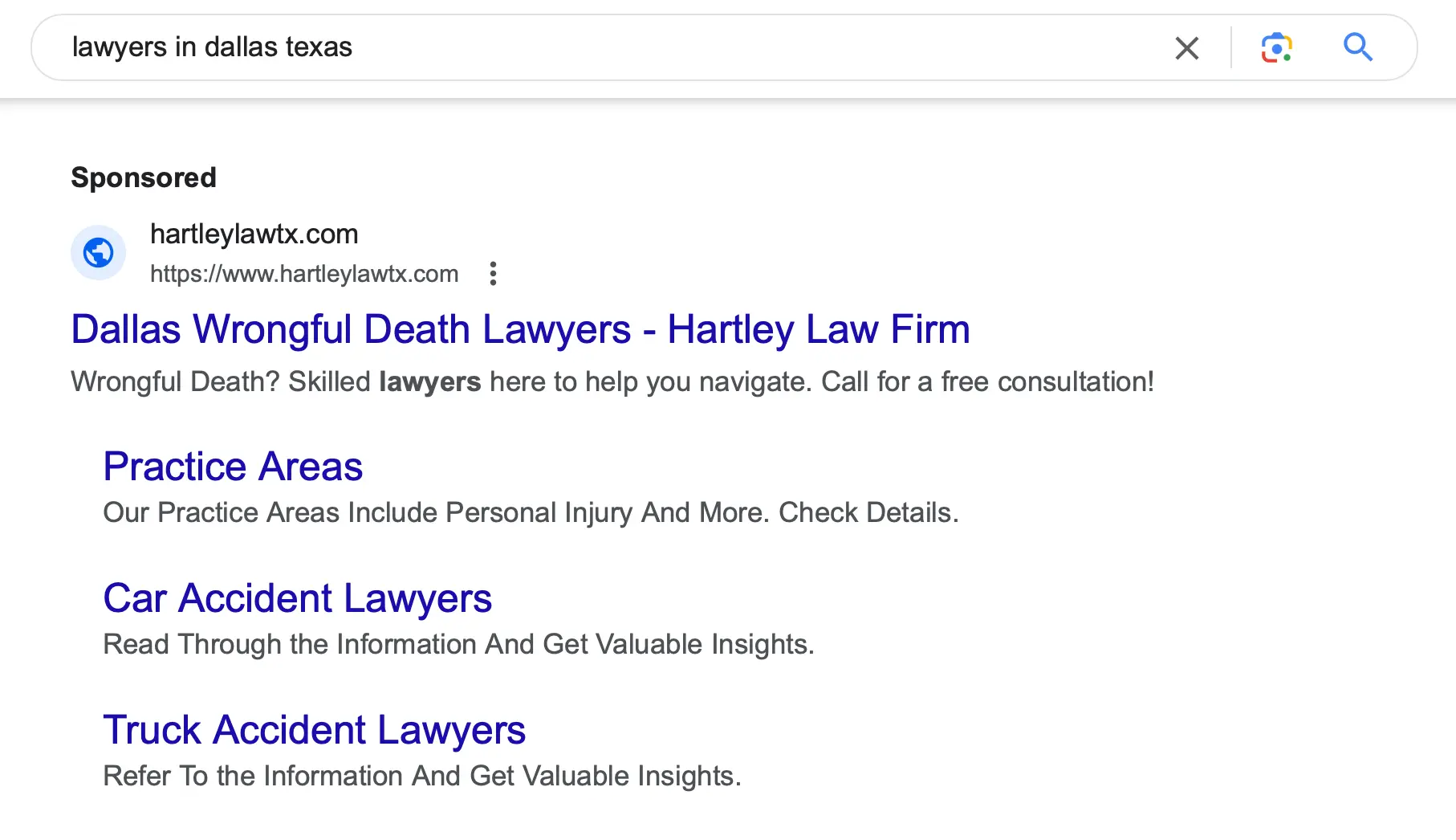
Digital Advertising Vs. Traditional Advertising
Digital advertising has many advantages compared to traditional advertising. For starters, it's easier to set up and execute digital campaigns than traditional TV, radio, newspaper, or billboard ads.
When running ads online, you can have (almost) real-time performance statistics, and the ads are less expensive.
In addition, when things go wrong, you can easily change your campaign's messaging, style, and target audience. All these features of digital ads are not available in traditional offline ads.
Let's see a few more reasons why digital advertising is an important component of digital marketing.
Why Is Digital Advertising Important?
Digital advertising is one of the best ways to reach your target audience. Let's quickly review the main benefits of running digital ads:
Target a specific online audience - With digital ads, you can define who you want to target. Digital advertising platforms allow you to narrow your targeting and show your ads to people with your ideal customer profile.
Deliver instant results - Digital advertising allows you to start a campaign and get results in hours. It's the only digital marketing channel that does this with the least effort.
Everything is measured - Digital advertising campaigns can be measured using digital analytics. As a marketer, you can monitor specific KPIs to evaluate a campaign's performance and take corrective actions.
Easily scalable - Digital advertising allows you to start with a low budget, gradually increase spending, and scale your campaigns. This is beneficial for small businesses that can't afford big advertising budgets.
The 7 Types of Digital Ads
Before getting into the details of how digital advertising works and how to create campaigns, you should become familiar with the different types of digital ads. These can be grouped into seven categories:
- Search Ads
- Social Media Ads
- Display Ads
- Video Ads
- Sponsored Content
- Influencer Ads
- Affiliate Marketing Ads
1. Search Ads
Search ads are usually text-based and appear in the search engine result pages (SERPS) of Google and Bing. In most cases, the ads are related to your search query, which is why they are very successful.
Here is an example:
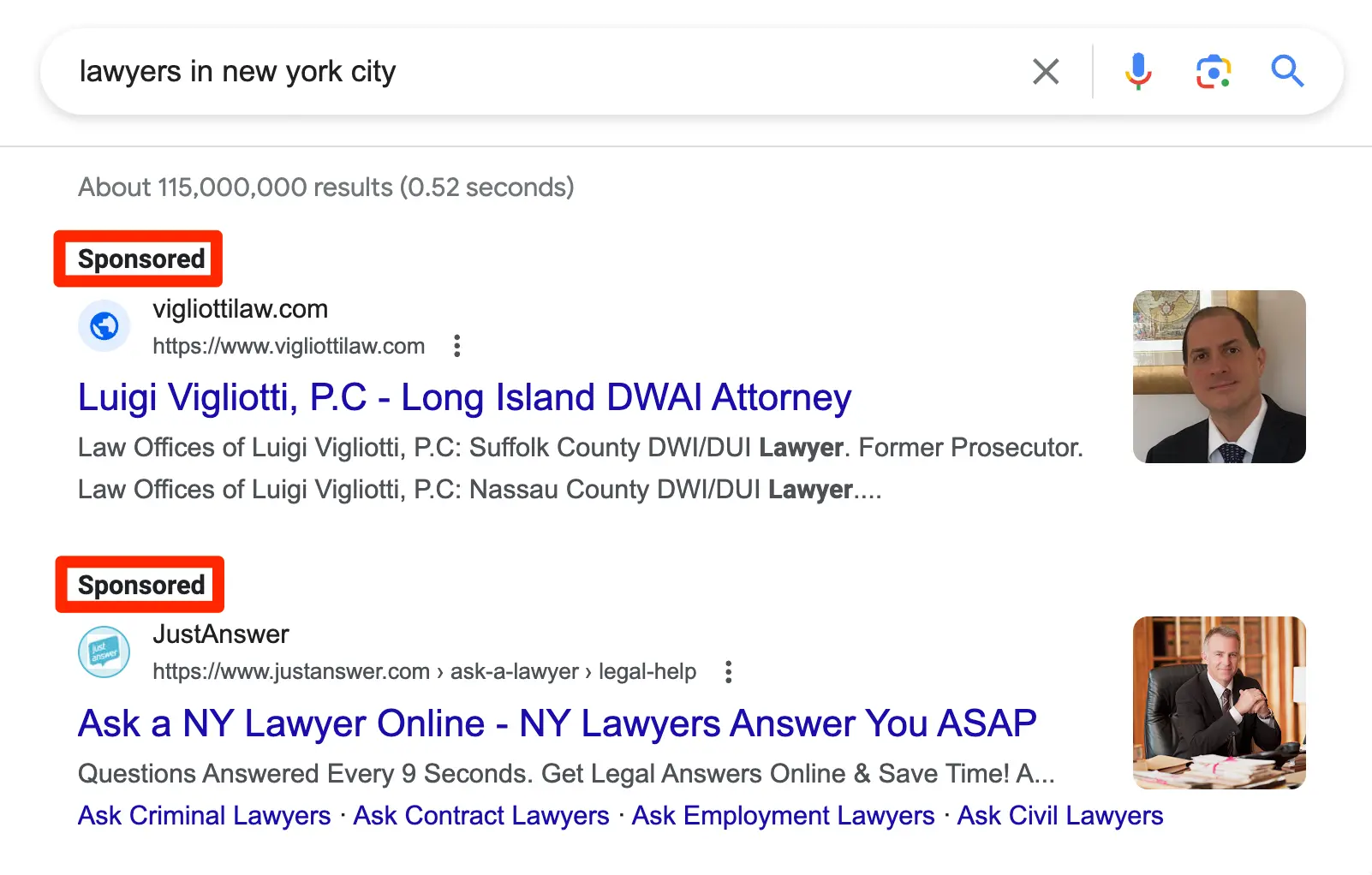
Ads are usually labeled as Sponsored or Ads to differentiate them from organic results. Advertisers only pay for clicks on their ads, and that's why they are referred to as PPC Ads (Pay-Per-Click).
The most popular PPC platforms are Google Ads and Bing Ads.
2. Social Media Ads
Social media ads appear on networks like Facebook, Twitter (X), Linkedin, Instagram, and TikTok. Advertisers use the platform ad management tools to launch campaigns, select audiences, define budgets, and create ads.
Unlike search ads, social network ads are visual, using images and videos to get the attention of millions of users browsing social networks. The advertiser pays the platform fee when users click or engage with an ad. Different pricing models can be used to manage costs and get the maximum return from ad spend.
Social media ads are great for raising brand awareness, increasing sales, and retargeting.
Here is an example of a Facebook ad.
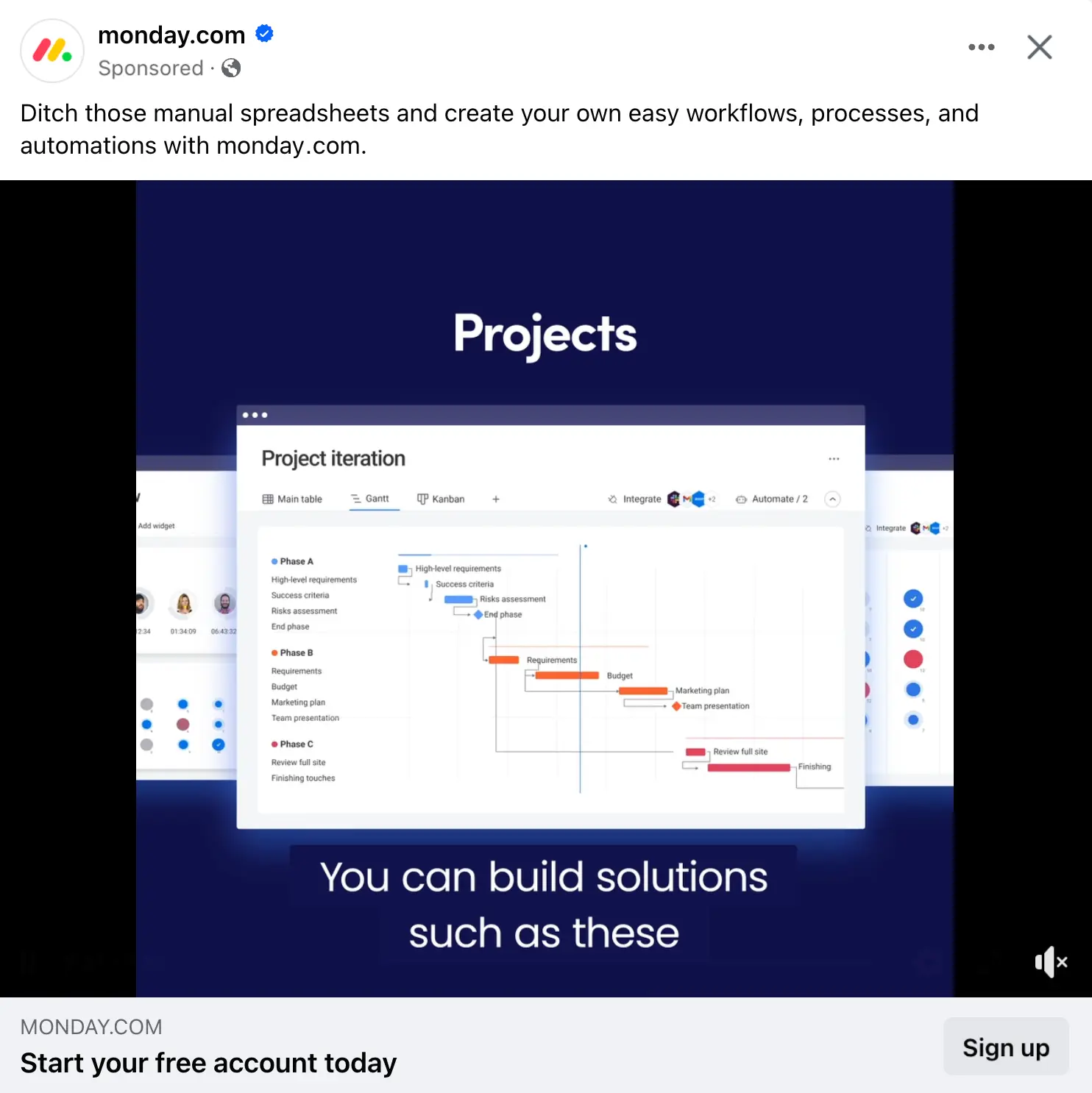
3. Display Ads
Display ads appear on websites that are part of an ad network like Google Adsense or Mediavine. Website owners apply to become members of an ad network, and once approved, they add a piece of code to their website. The network is responsible for showing ads to users as they browse the site.
Display ads are usually relevant to the page content or as part of a retargeting campaign.
Advertisers use Google Ads to launch display ads campaigns for the Google Display Network. Here is an example of a display ad.
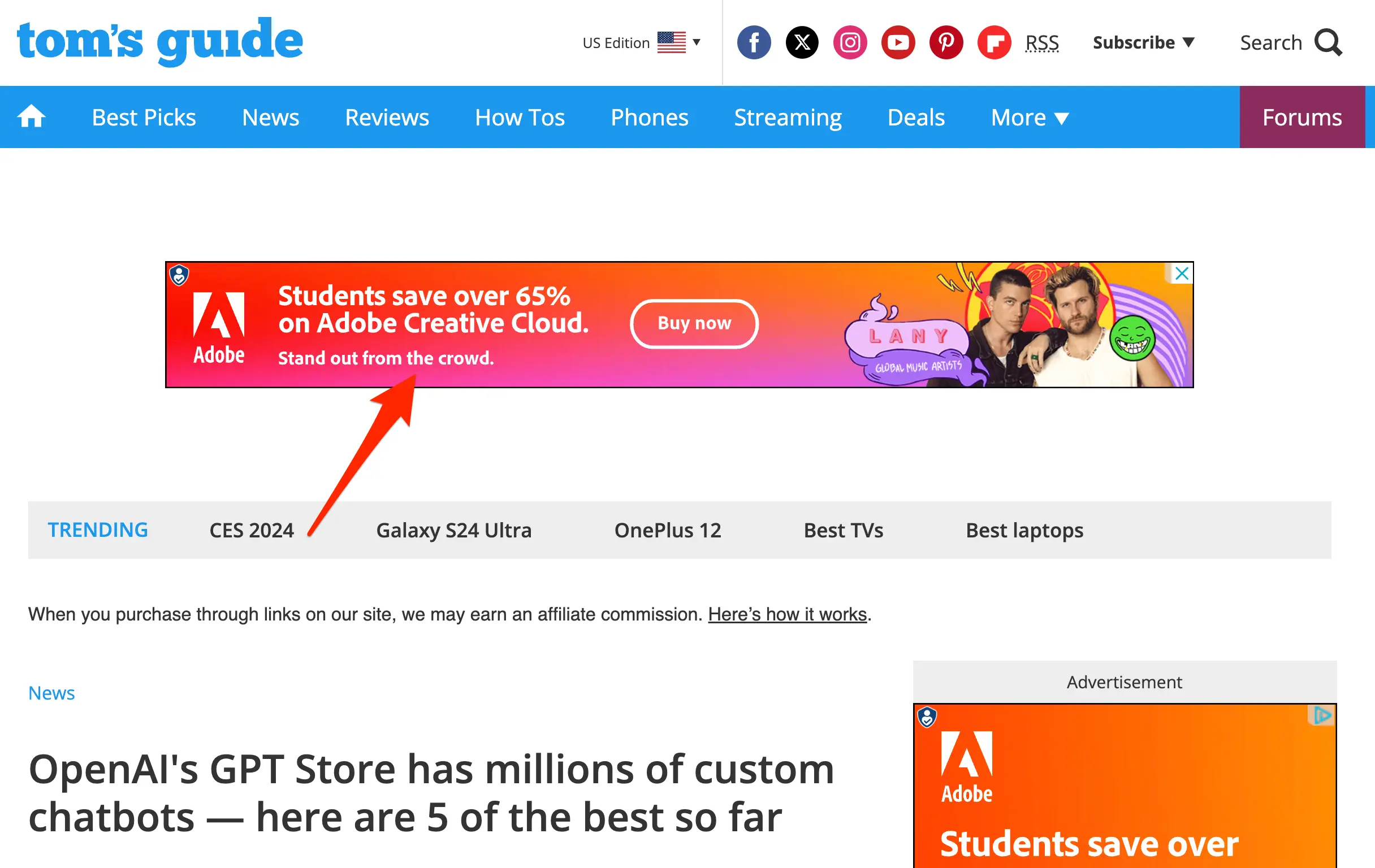
4. Video Ads
Video ads appear on different platforms and formats. You can view video ads on YouTube, Facebook, TikTok, and even websites that are part of an ad network that supports video. The ads are usually short videos (5 to 15 seconds), and in some cases, they are more effective than text or image ads.
The only downside of video ads is that they are more difficult to create than image ads. Although various tools can help you create short video ads, it is not as easy as creating a text or image ad.
Here is an example of a YouTube Video ad.
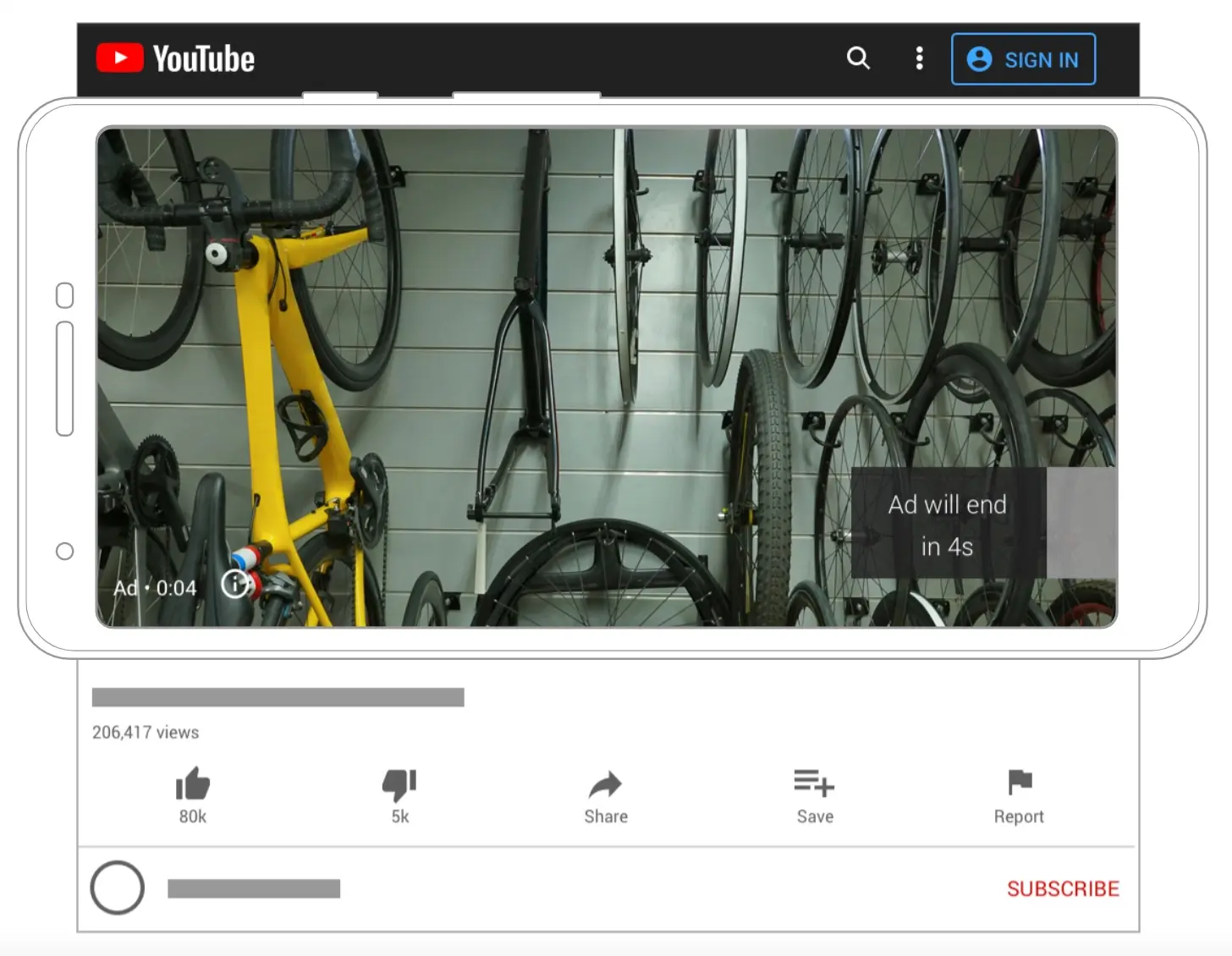
5. Sponsored Content
Sponsored content is a type of advertising where the advertisers pay publishers to host content on their website promoting a company, product, or service.
The content can be anything from a blog post, video, case study, report, or brochure and is usually labeled as "Sponsored Content". The cost depends on the type of content and the website on which it is published. Usually, the advertiser and publisher agree directly on the terms of the cooperation since no intermediate platform is involved.
Here is an example of sponsored content on a publisher's website.
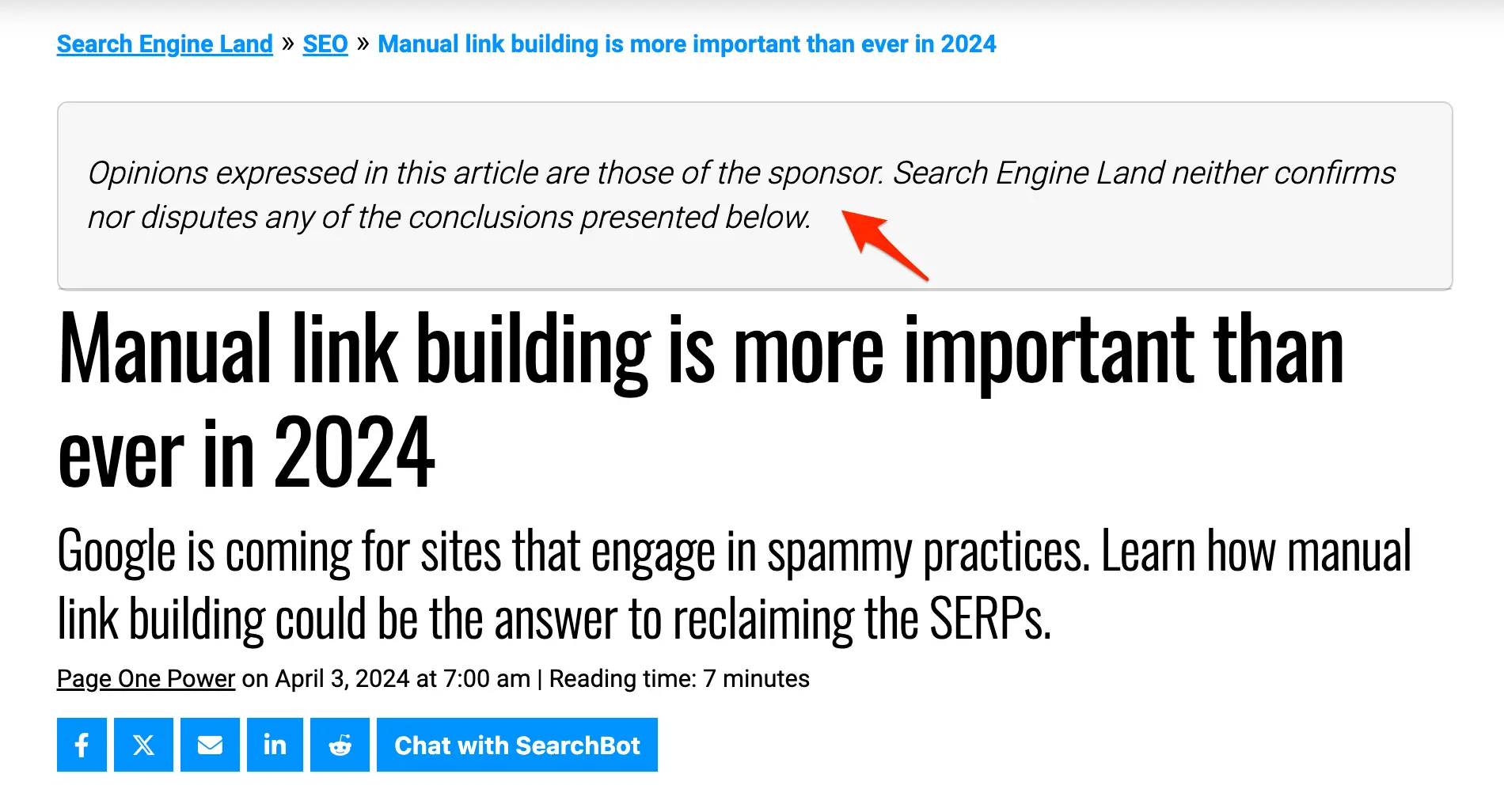
6. Influencer Ads
Influencer ads are similar to sponsored content, but instead of publishing content on a website, you agree to work with influencers to promote your brand, product, or services to their audience.
Influencer marketing is growing rapidly, estimated to be worth more than $22 billion. The way this works is simple: you find influencers matching your audience, and you reach out and agree on the terms of cooperation.
Here is an example of how a global brand uses influencer marketing to penetrate a new audience.
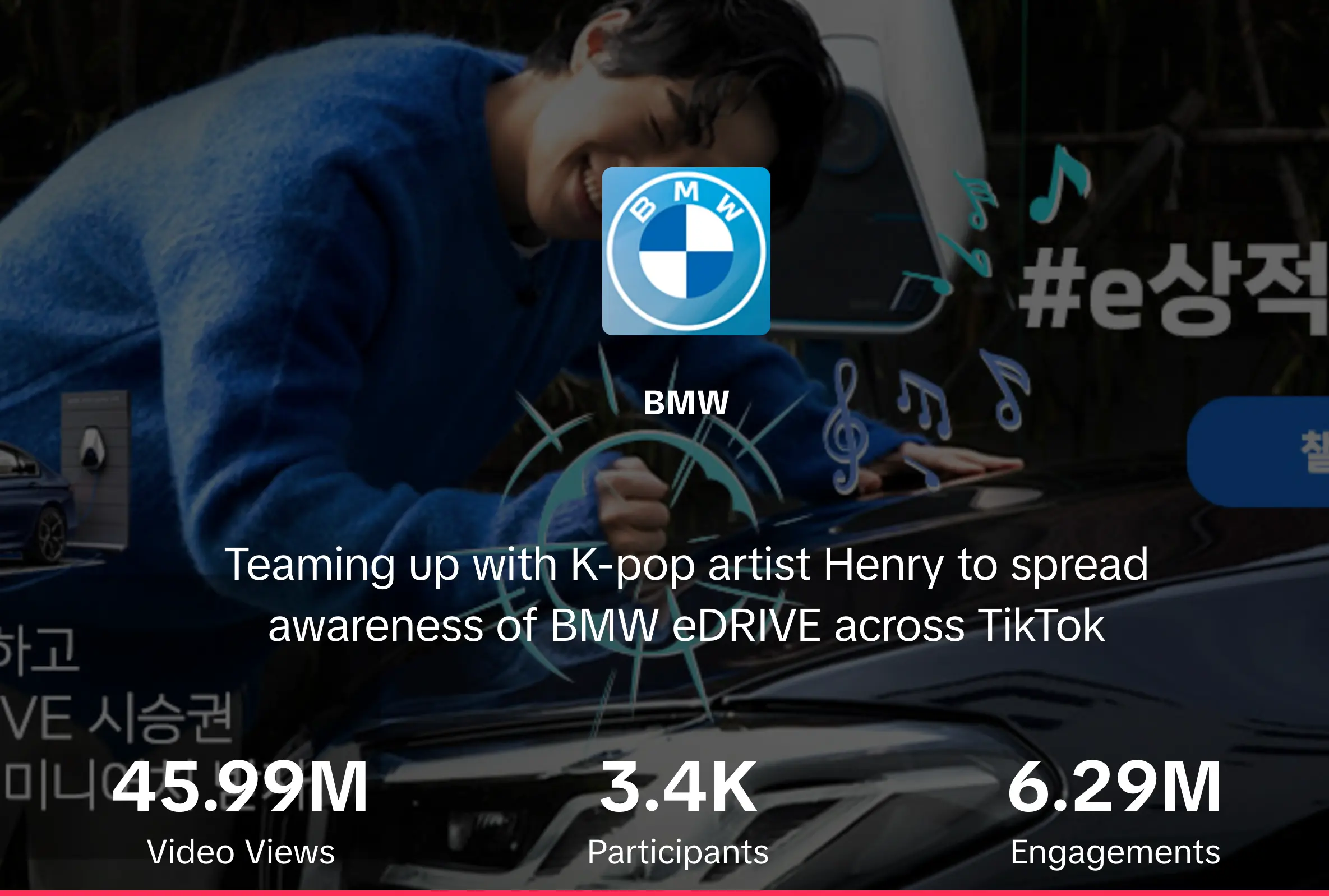
7. Affiliate Marketing Ads
Affiliate marketing ads can be text, image, or video and appear on websites, social media pages, or emails. Affiliates promote another company's products or services in exchange for a commission.
Affiliate networks like Impact bring companies and publishers together, making it easier to find affiliate ads to promote on your website or social media pages.
Here is an example of how to inform users that products presented in a blog post are part of an affiliate agreement.

What Type of Digital Ads Are Most Effective?
The success of a digital advertising campaign depends on many factors, such as the type of ads, ad messaging, where the ads are shown, and the type of product advertised through the ads. It's also related to the business and brand reputation.
Several industry studies and surveys about digital advertising showed that video ads are the most effective type of ads, Google and Facebook Ads have the highest ROI from ad spend, and digital ads are highly suitable for increasing brand awareness. Here is a list of the most important findings. Sources (1, 2, 3, 4)
- The average click-through rate (CTR) for Facebook ads is 1.51%.
- PPC returns $2 for every $1 spent—resulting in a 200% ROI.
- Digital ads can increase brand awareness by 80%.
- Customers are 70% more likely to purchase after seeing a retargeting ad.
- Display ads aid conversions by 59%.
- Facebook and Google Ads have the highest ROI.
- 81% of marketers said influencer marketing works.
- 90% of users say watching videos helps them make purchasing decisions.
Digital Advertising Strategy Best Practices
Follow these steps to create an effective digital advertising strategy:
1. Get To Know Your Target Audience
Before starting any digital marketing campaign, the first step is defining your target audience. This is necessary so as to choose the right type of ads and messaging that will resonate with them.
To get started, look at your analytics and identify key demographics such as age, gender, location, and interests. This data can be gathered from your Google Analytics, social media analytics, or email subscriber list.
Understanding these metrics allows you to tailor your digital ads. For example, if your analytics show that most of your audience is in their 30s, you should use platforms like TikTok and Instagram that are popular with this age group.
Another way to understand your audience is to create buyer personas. Start by thinking about the profile of your ideal customer. Identify their demographics, goals, challenges, and how your business can help.
Create personas for as many types as possible and use the different advertising options of each platform to transform your buyer personas into 'audiences' on each platform.
2. Set Marketing Goals
The next step is to set one or more digital marketing goals. Your goals should be specific and measurable. Here are some examples of SMART goals for Google Ads (search and display ads).
- Increase Ad Click-Through Rate (CTR) by 0.5% in the next 30 days.
- Reduce Cost Per Acquisition (CPA) by 2% over the next quarter.
Notice that the above goals are realistic and attainable. Increasing CTR by 0.5% is possible with A/B testing several creatives and reducing CPA by 2% by reallocating budgets to the most profitable campaigns.
3. Choose Your Marketing Channels
Next, you should choose which marketing channels to use for your campaigns. Look at the different digital ad types (above) and decide which ones are most appropriate for your products and audience.
Follow these tips:
Look at your buyer personas and identify where your target audience spends most of their time online. If they're frequently on social media, consider channels like Facebook or Instagram. For a professional audience, LinkedIn might be more appropriate.
Match the channel to your marketing goals. If your goal is brand awareness, social media and display ads are more suitable. Search ads are generally more effective (and expensive) for getting leads or making sales.
Choose channels where your content naturally resonates with the user experience. For example, for products, you can use image-heavy platforms like Instagram, while for services or B2B offerings, you might find more success with sponsored blog posts.
4. Create Your Digital Ads
Once you choose your preferred platforms, you should review their ad requirements and create ads. For the best results, follow these tips:
Clear and compelling message - Your ads should immediately convey the value of your product or service to your target audience. Use concise language and a strong call-to-action that prompts the user to take action, like making a purchase, signing up for a newsletter, or visiting your website.
Use high-quality visuals - Ensure your ads include high-quality images or videos relevant to your message. For text-based ads, like Google Search Ads, use keywords that match your audience's search intent in your headlines and descriptions.
Provide for all available sizes - Display and video ads on networks like Facebook, Instagram, and TikTok can have different sizes and aspect ratios. For the best performance, provide optimized ads for all sizes.
5. Monitor Campaign Performance
When running ads, tracking the right metrics to monitor and evaluate your campaigns' performance is necessary.
In general, for most kinds of ads, you should measure the following:
- Click-Through Rate (CTR): Measures the percentage of people who clicked on your ad after seeing it. High CTR indicates that your ad is relevant and engaging to your audience.
- Conversion Rate: Tracks the percentage of clicks that converted. The higher the conversion rate, the better.
- Cost Per Click (CPC): The average cost you pay each time someone clicks on your ad.
- Cost Per Acquisition (CPA): Measures how much it costs to make a conversion with a monetary value (such as selling a product).
- Impressions: The number of times your ad was displayed. Low impressions mean your targeting settings are wrong. You should change them to reach more people.
Finally, always test and iterate. Digital advertising platforms offer tools to A/B test different elements of your ads, such as headlines and images. Use these features to continually refine your ads based on performance data, ensuring you're always optimizing for the best possible results.
Digital Advertising Tools
You need tools to manage your digital advertising campaigns. There are many available options, but the ones we use are:
- Canva - for creating images and short videos.
- Semrush - you can use it to perform keyword research for search ads and competitor analysis.
- Google Trends - to find which topics are trending on Google. If a topic is trending on Google, it's also probably trending on other platforms.
- Google Analytics - to measure what actions visitors from ads do when visiting your website.



